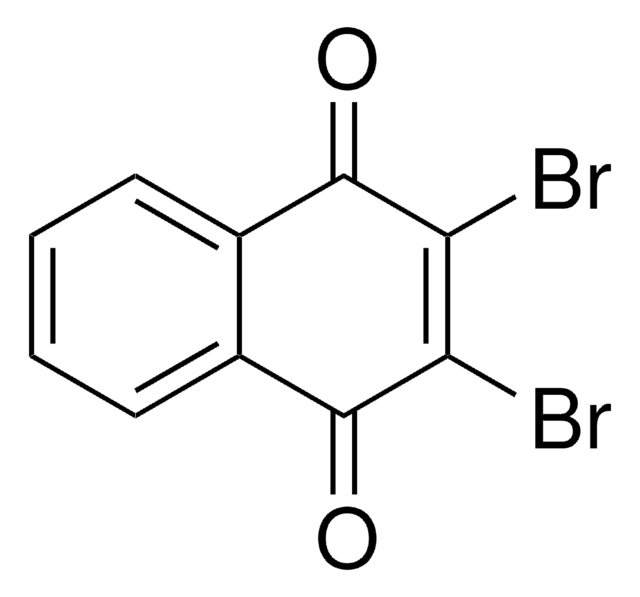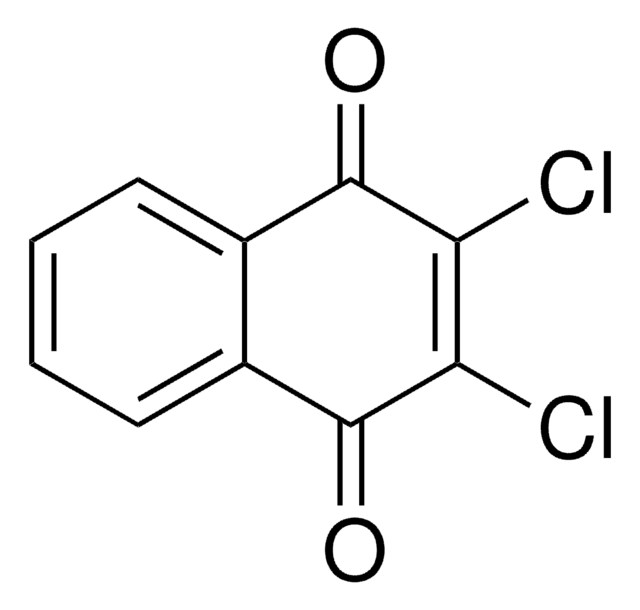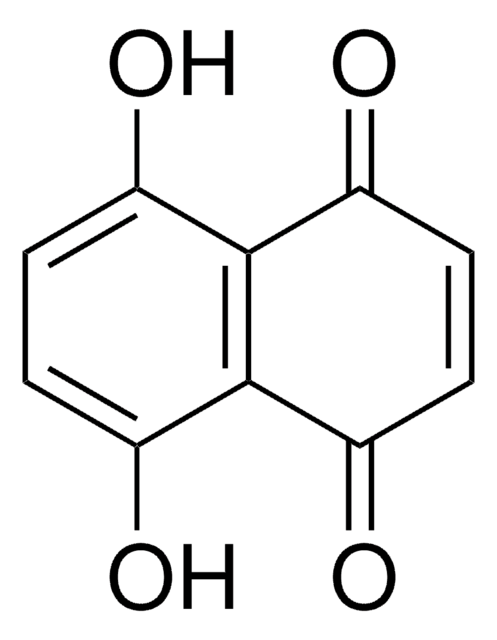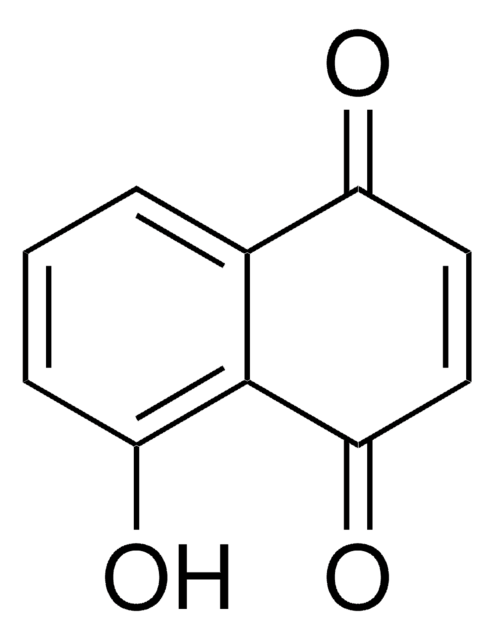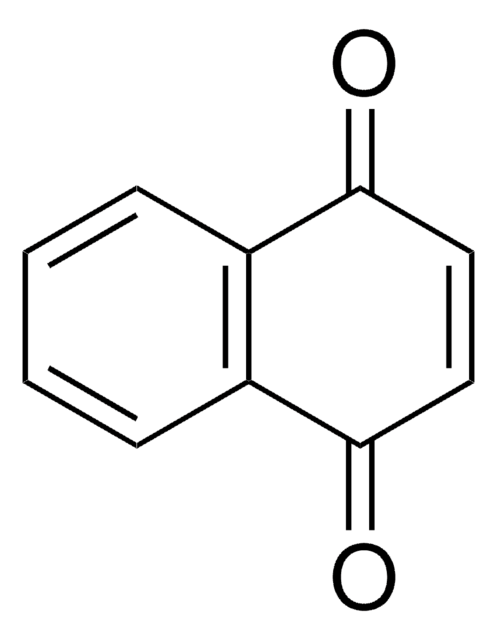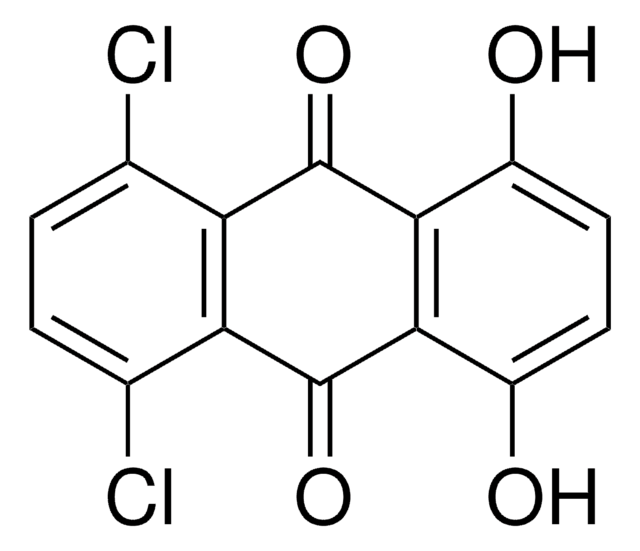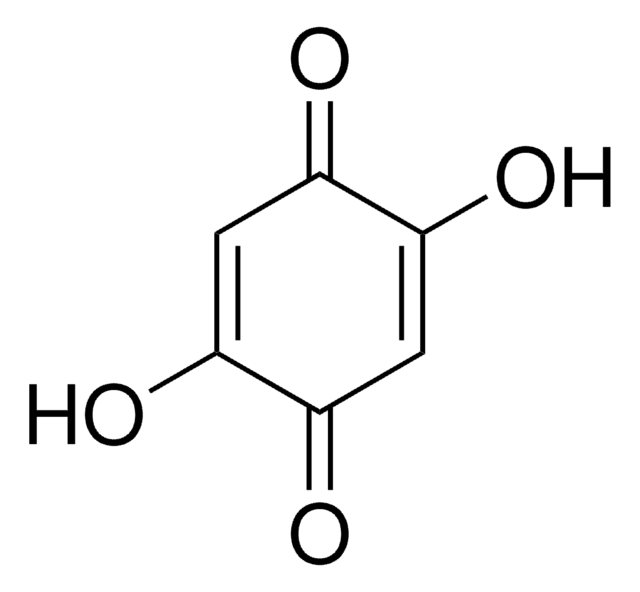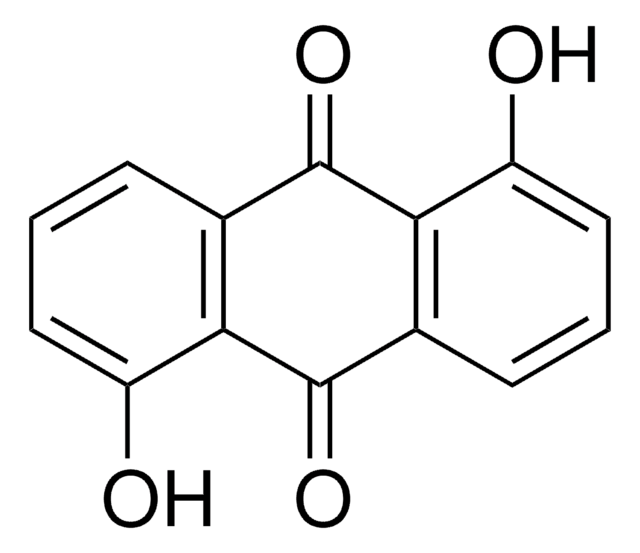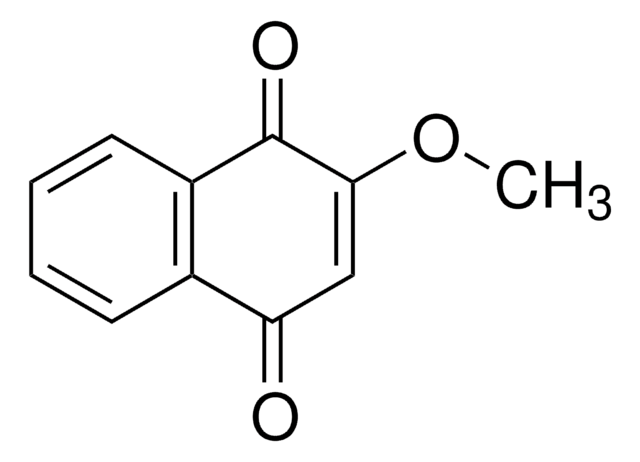343420
2,3-Dichloro-5,8-dihydroxy-1,4-naphthoquinone
95%
Synonym(s):
2,3-Dichloro-5,8-dihydroxynaphtho-1,4-quinone
Sign Into View Organizational & Contract Pricing
All Photos(2)
About This Item
Empirical Formula (Hill Notation):
C10H4Cl2O4
CAS Number:
Molecular Weight:
259.04
MDL number:
UNSPSC Code:
12162002
PubChem Substance ID:
NACRES:
NA.23
Recommended Products
Assay
95%
mp
197-199 °C (lit.)
SMILES string
Oc1ccc(O)c2C(=O)C(Cl)=C(Cl)C(=O)c12
InChI
1S/C10H4Cl2O4/c11-7-8(12)10(16)6-4(14)2-1-3(13)5(6)9(7)15/h1-2,13-14H
InChI key
UVESKDKGJSABKP-UHFFFAOYSA-N
Signal Word
Warning
Hazard Statements
Precautionary Statements
Hazard Classifications
Acute Tox. 4 Dermal - Acute Tox. 4 Inhalation - Acute Tox. 4 Oral - Eye Irrit. 2 - Skin Irrit. 2 - STOT SE 3
Target Organs
Respiratory system
Storage Class Code
11 - Combustible Solids
WGK
WGK 3
Flash Point(F)
Not applicable
Flash Point(C)
Not applicable
Personal Protective Equipment
dust mask type N95 (US), Eyeshields, Gloves
Regulatory Information
新产品
Choose from one of the most recent versions:
Already Own This Product?
Find documentation for the products that you have recently purchased in the Document Library.
Jeremy D Baker et al.
SLAS discovery : advancing life sciences R & D, 26(3), 400-409 (2020-09-29)
Tauopathies are neurological disorders characterized by intracellular tau deposits forming neurofibrillary tangles, neuropil threads, or other disease-specific aggregates composed of the protein tau. Tauopathy disorders include frontotemporal lobar degeneration, corticobasal degeneration, Pick's disease, and the largest cause of dementia, Alzheimer's
Xiao-Fei Shang et al.
Scientific reports, 8(1), 1609-1609 (2018-01-27)
As important secondary plant metabolites, naphthoquinones exhibit a wide range of biological activities. However, their potential as sustainable alternatives to synthetic acaricides has not been studied. This study for the first time investigates the acaricidal activity of naphthoquinones against Psoroptes
Our team of scientists has experience in all areas of research including Life Science, Material Science, Chemical Synthesis, Chromatography, Analytical and many others.
Contact Technical Service